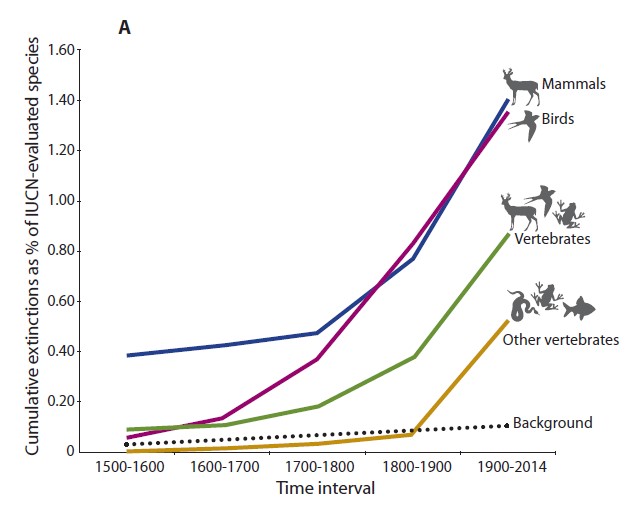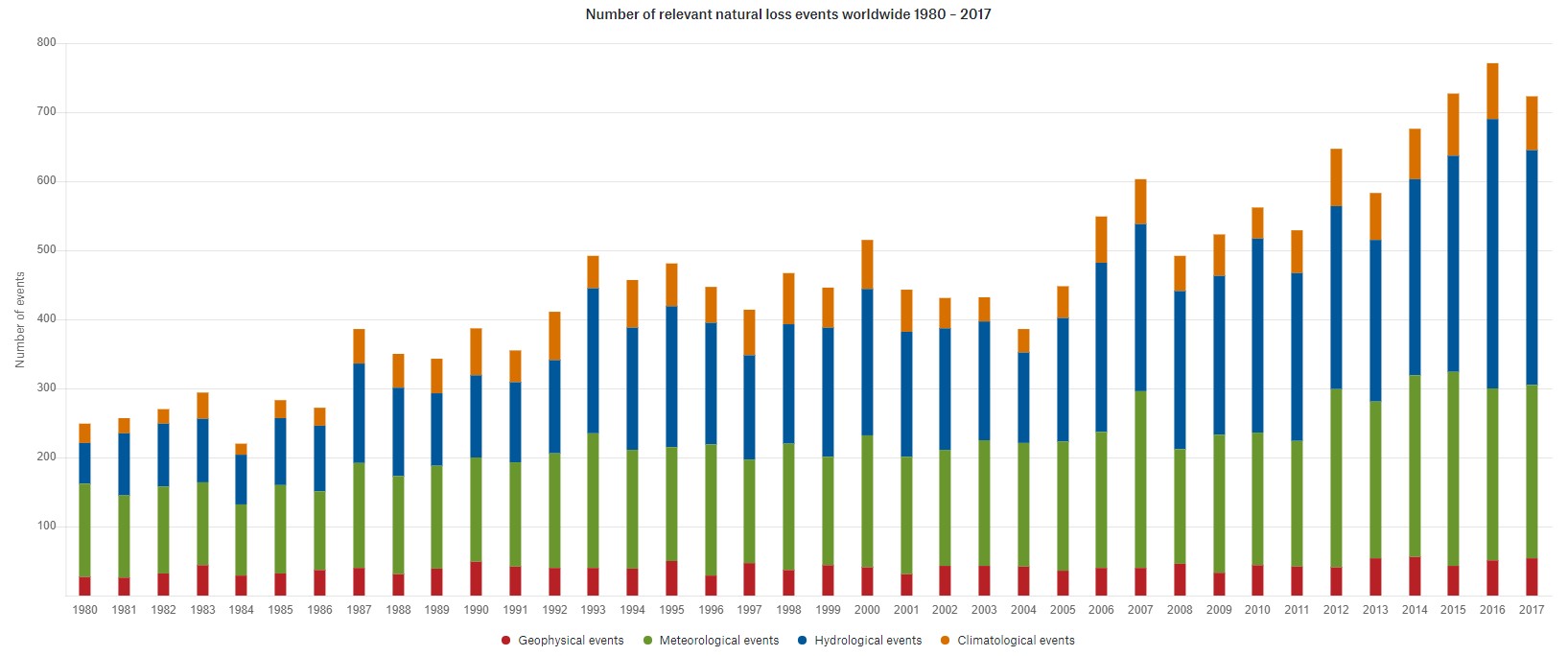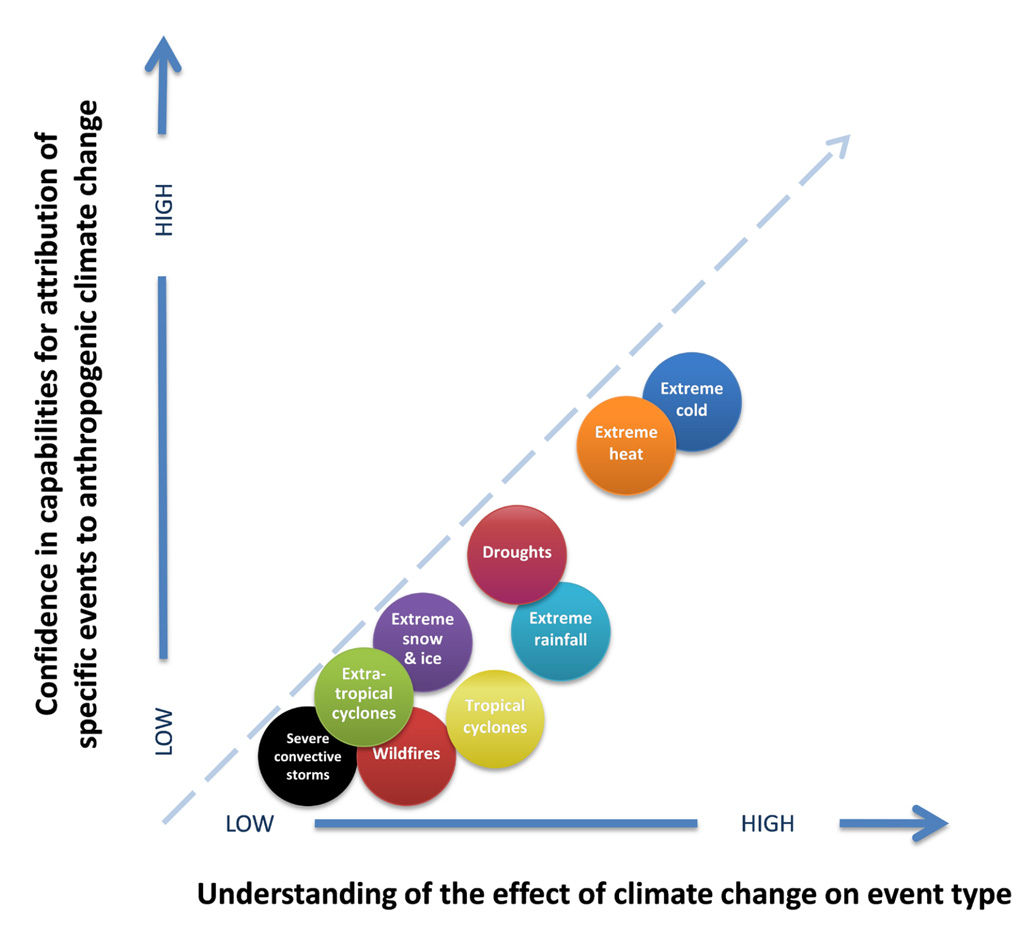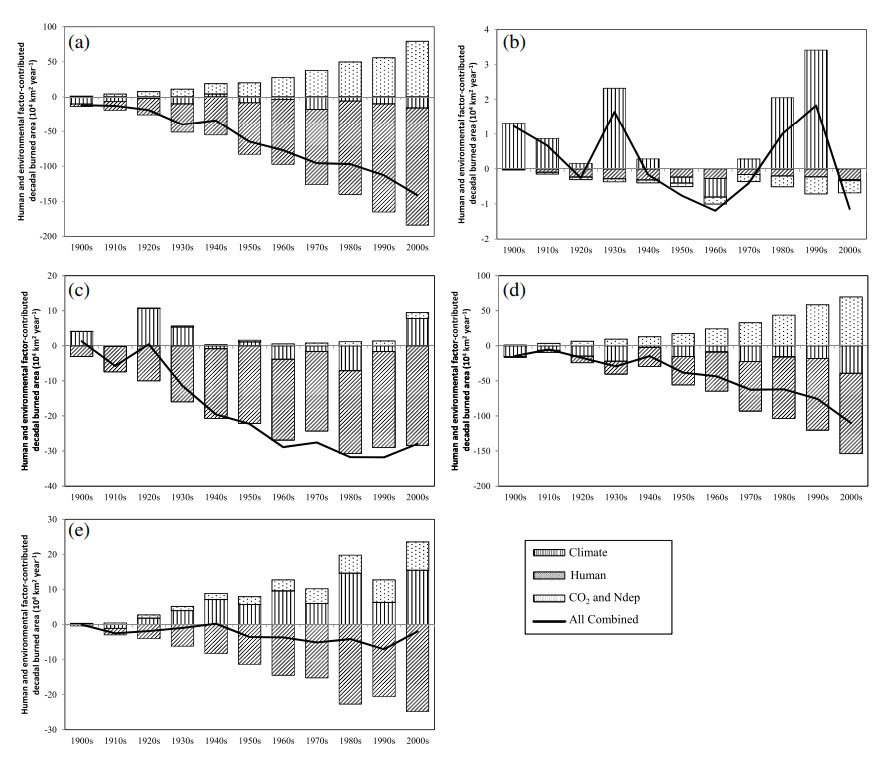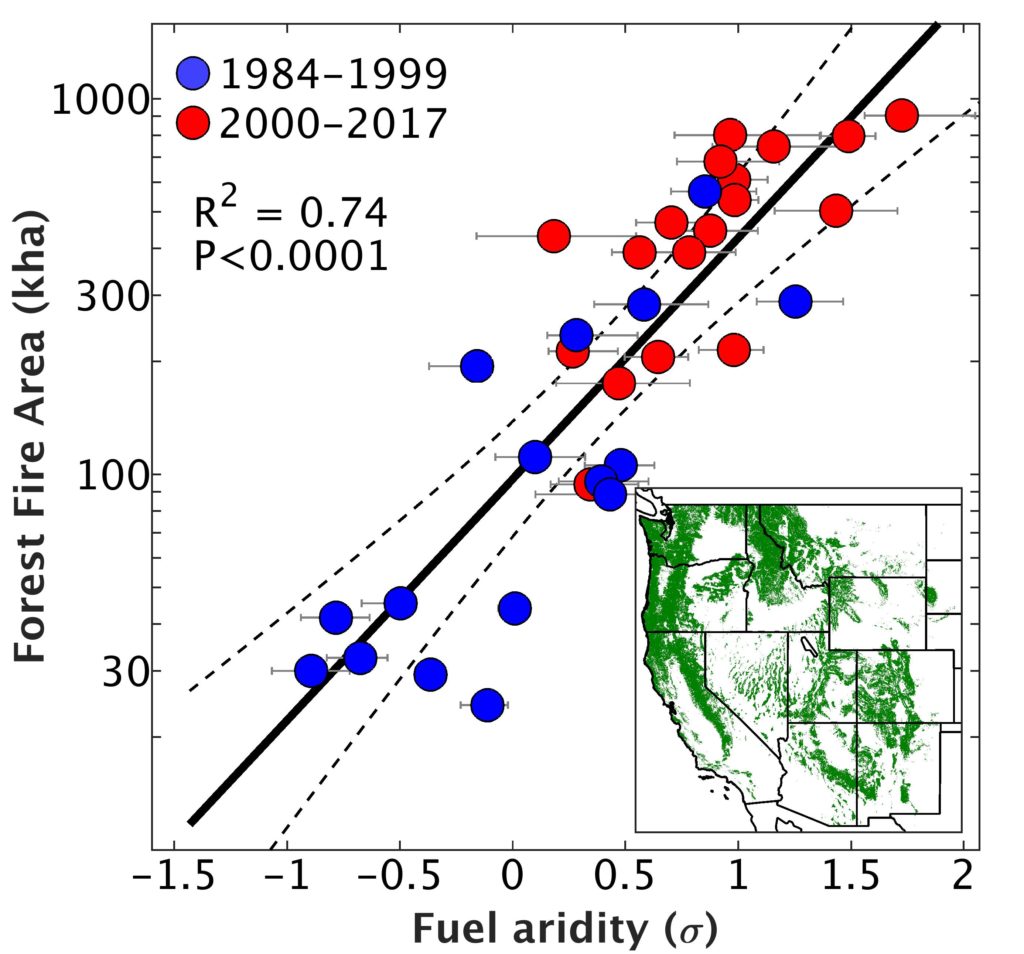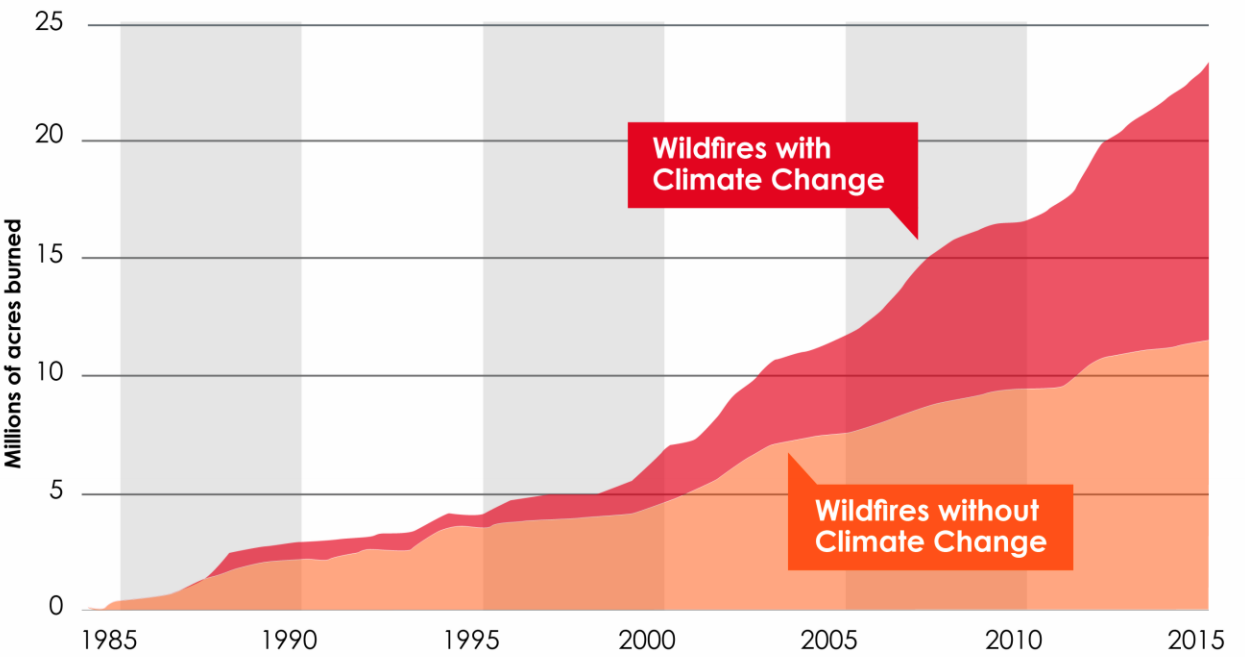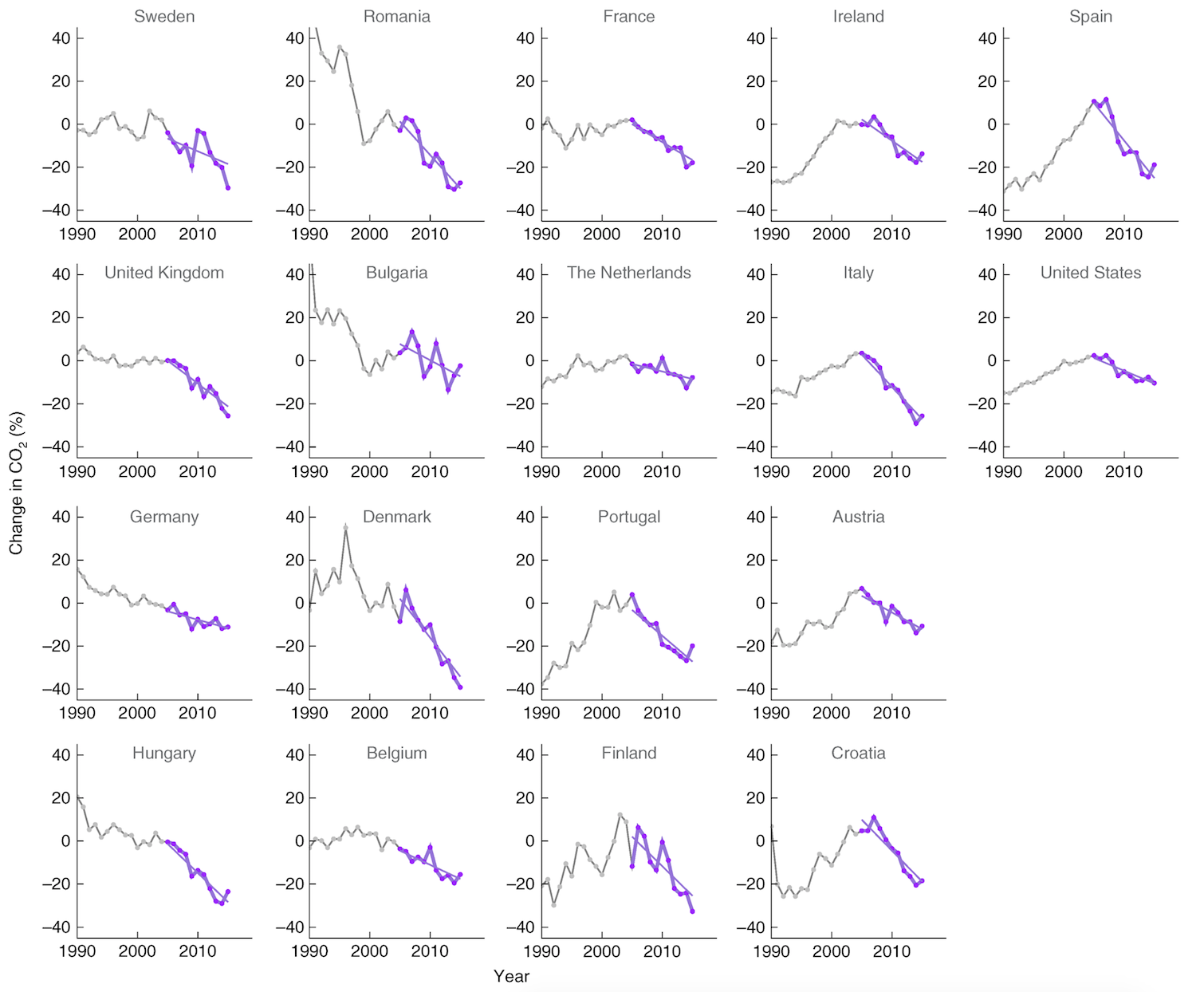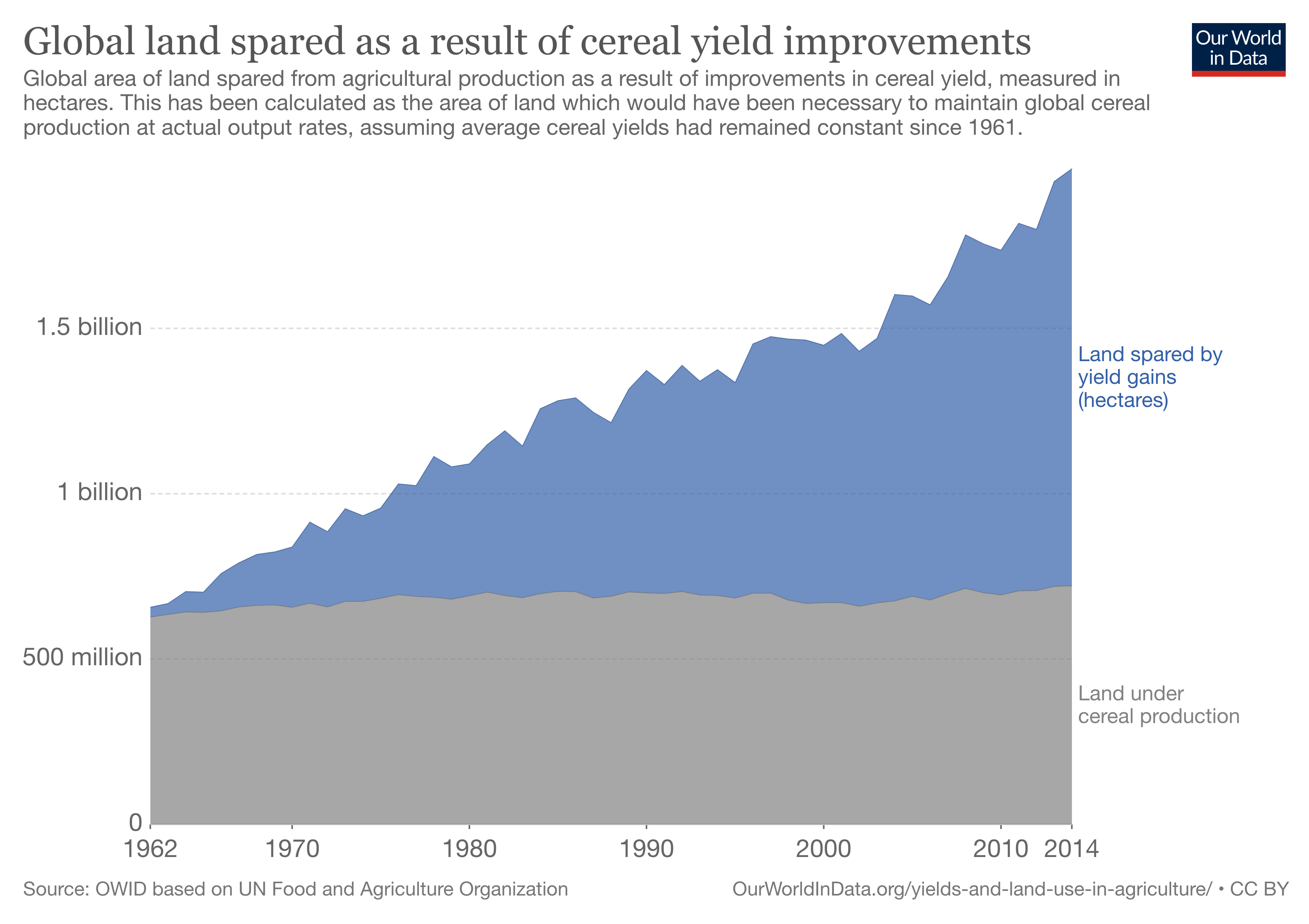Six scientists analysed the article and estimate its overall scientific credibility to be 'low'. more about the credibility rating
A majority of reviewers tagged the article as: Cherry picking, Misleading.
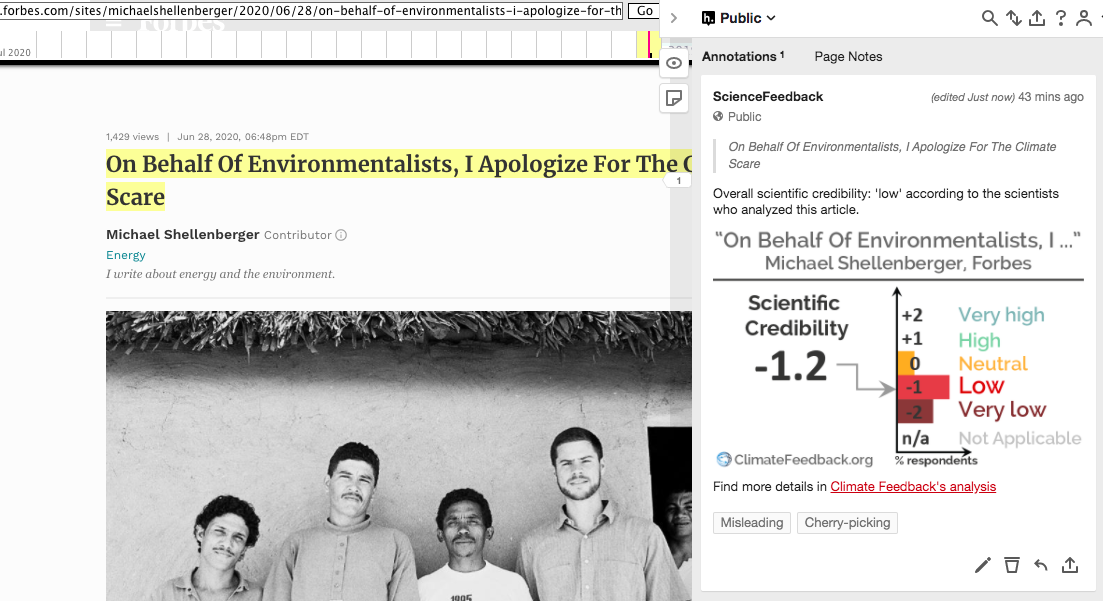
SUMMARY
The article by Michael Shellenberger was published in full or in part in various media outlets, including Forbes, Zero Hedge, Breitbart, PJ Media, The Daily Wire, The Australian, and Quillette. The article has been shared more than 200,000 times on social media since it was published, according to Buzzsumo. Forbes unpublished the article on the same day it was published for violating editorial guidelines around self-promotion. In the article, Shellenberger, who is promoting a new book, outlines a series of claims about climate change. As the reviewers describe below, several of these claims are accurate or partially accurate. However, others are inaccurate and mislead readers by lacking context and cherry-picking data while overlooking other relevant scientific studies.
Specifically, Shellenberger claims that “climate change is not making natural disasters worse.” As the reviewers describe below, this claim is inaccurate and contradicts reports from the IPCC as well as numerous scientific studies linking anthropogenic climate change to temperature extremes, drought, precipitation patterns, and wildfires[1-4].
Shellenberger also claims that “Humans are not causing a ‘sixth mass extinction’”. This categorical statement misrepresents the discussion happening in the scientific community. Scientific evidence clearly shows that human activities are driving global species extinctions, and these extinctions are expected to accelerate with continued global warming[5-12]. According to the IPBES, “degradation of the Earth’s land surface through human activities is negatively impacting the well-being of at least 3.2 billion people, pushing the planet towards a sixth mass species extinction.”[10] The IPBES 2018 report also states, “It has been proposed that we are in a sixth mass extinction of the Earth’s species, following five others in the past 540 million years[5,13,14]. There are an accumulating number of studies that almost universally support this conclusion, although often with caveats owing to the paucity of data.” As described in Ceballos et al. (2015), “conservatively almost 200 species of vertebrates have gone extinct in the last 100 years.”[5] This result contrasts with the estimated background extinction rate, which would take approximately 10,000 years for 200 vertebrate species to go extinct. So clearly, the possibility that human activities are causing a mass extinction is being actively discussed by scientists, both with regards to current conditions and future trends, including global warming that is expected to accelerate species extinction rates[10,12].
Scientists who reviewed this article also noted several misleading claims about wildfires, including “fires have declined 25% around the world since 2003,” and “The build-up of wood fuel and more houses near forests, not climate change, explain why there are more, and more dangerous, fires in Australia and California.” Although global burned area declined ~25% from 1998-2015, this is driven in part by non-climatic factors, such as clearing land for agriculture[15,16]. By conflating purposefully set fires and wildfires as well as climatic and non-climatic factors driving these fires, the claim relies on flawed reasoning to suggest that wildfires are not affected by climate change. These claims also contradict scientific studies showing that anthropogenic climate change has increased fire risk in the western U.S. and Canada[17-19].
The reviewers who analyzed this article rated its overall credibility to be low. In their comments below, the scientists evaluate many of these claims and describe how they are inaccurate or mislead readers by contradicting available evidence or using scientific data out of context.
See all the scientists’ annotations in context. You can also install the Hypothesis browser extension to read the scientists’ annotations in context.
REVIEWERS’ OVERALL FEEDBACK
These comments are the overall assessment of scientists on the article, they are substantiated by their knowledge in the field and by the content of the analysis in the annotations on the article.
Zeke Hausfather, Research Scientist, Berkeley Earth:
Shellenberger’s article promoting his new book „Apocalypse Never“ includes a mix of accurate, misleading, and patently false statements. While it is useful to push back against claims that climate change will lead to the end of the world or human extinction, to do so by inaccurately downplaying real climate risks is deeply problematic and counterproductive.
Shellenberger’s claims that climate plays no role in natural disasters and wildfires fly in the face of a large peer-reviewed scientific literature showing clear links between climate change and extreme heat events, drought, and extreme rainfall as well as links between hotter and drier conditions and wildfire areas burned in many regions of the world[1-4].
Shellenberger also falls into the trap of seeing a single technology (nuclear) as the one true solution to climate change, and mistakenly sees denigrating other clean energy technologies as the best way to promote it. The real world involves messy trade-offs and uncertainties, and decarbonization will involve a range of different technological solutions across industries and geographies rather than a single panacea.
For more details on each, see my comments below.
Stefan Doerr, Professor, Swansea University:
The article argues that society has been misled about causes and consequences of climate change, which has led to “climate alarmism.” The author advocates that we should be less concerned about climate change than many environmentalists argue. Whilst the latter is relative depending on how concerned an individual is and which specific (and perhaps extreme) view this aligns with, some of the supporting statements in the article related to wildfire are (i) inaccurate for key facts supporting argumentation, or (ii) omit important information that leads to flaws in the conclusions.
“Climate change is not making natural disasters worse”.
This is incorrect for wildfires. Several global climate trends promote fire: increased temperature, frequency, intensity and/or extent of heatwaves, droughts and extreme winds. This is very well established and summarised in the IPCC (2014) report[1,2].
“Fires have declined 25% around the world since 2003″.
It is correct that the total global area burned has OVERALL declined over the last decades, BUT this is incorrectly used to argue that climate change is not affecting wildfires. The overall decrease is largely due a substantial reduction in flammable vegetation in African grasslands arising from human land use changes. Climate change has led to an increase in area burned in regions where fires burn more intensely and have a greater impact (e.g. western USA and Canada)[18,19]. This is omitted, leading to a false perception.
“The build-up of wood fuel and more houses near forests, not climate change, explain why there are more, and more dangerous, fires in Australia and California“.
Partially correct[17], but the assertion that the climate change related factors outlined above do not also contribute to increasingly “dangerous fires” is fundamentally flawed. It is comparable to suggesting that smoking alone and not obesity is responsible for an increased risk of cardiovascular disease. Both factors are clearly important.
Daniel Swain, Researcher, UCLA, and Research Fellow, National Center for Atmospheric Research:
The article presents a mix of out-of-context facts and outright falsehoods to reach conclusions that are, collectively, fundamentally misleading. The author claims to reference specific sources, including „the IPCC, the Food and Agriculture Organization of the United Nations (FAO), [and] the International Union for the Conservation of Nature (IUCN).“ However, the author’s claims are broadly unsupported by any of these authoritative bodies[1].
This is not a scientific paper. It is intended, I guess, to be an article for the general public. Unfortunately, it is neither. It does not have a logical structure that allows the reader to understand what he would like to address, aside from a very general and misleading idea that environmentalists and climate scientists have been alarmist in relation to climate change. He lists a series of eclectic environmental problems like the Sixth Mass Extinction, green energy, and climate disruption. And without any data nor any proof, he discredits the idea that those are human-caused, severe environmental problems. He just mentions loose ideas about why he is right and the rest of the scientists, environmentalists, and general public are wrong. Being objective, this is a really bad article. It will cause confusion among the public—perhaps that is his idea.
He indicates, with no data, that we are not in the Sixth Mass Extinction. I will explain here why he is wrong. For a long time, we have been aware that our activities have caused the extinction of many species. The case of the dodo, the first human-caused extinction in modern times (1600 AD) is relatively well-known for the general public[5]. In the last decade, there has been a plethora of scientific studies that have carefully analyzed the current extinction rates and have compared them with the natural or background rates occurring in the last million years[6-8]. Evolution of life proceeds as a dynamic balance of the extinction and speciation processes. While some species become extinct others are generated by speciation events. Under normal times, when Earth is not suffering a global catastrophe, the normal extinction rate is called the “background extinction rate.” However, in the last 600 million years life has experienced 5 mass extinctions, where most species on Earth have disappeared. These mass extinctions were each caused by a natural catastrophe, such as a meteorite, or happened over thousands or hundreds of thousands of years, causing the extinction of 70 to 90% of all living species.
In 2015, I showed with my colleagues from the National Autonomous University of Mexico and Stanford University that we have entered the Sixth Mass Extinction (see figure below)[5].
Figure—Cumulative vertebrate species that have gone extinct or extinct in the wild according to IUCN data from 2012. Dashed black line represents the background extinction rate. From Ceballos et al. (2015)[5].
The 543 species of vertebrates (mammals, birds, reptiles, amphibians, and fishes) that were lost over the last 120 years would have become extinct in 10,000 years under the background extinction rates prevailing in the last million years. In other words, in the last century we lost in one year the same number of species that would have been lost in 100 years!
We and other scientific groups have also shown that the extinction crisis is more severe because hundreds of millions of populations of animals and plants have disappeared in the last 40 years[5-9].
Those extinctions are accelerating, threatening the ecosystems that support life on Earth. If the current extinction crisis continues unchecked, we will lose entire ecosystems and the critical services they provide, including the proper combination of the gases of the atmosphere that make life on Earth possible, provision of fresh water, pollination and pest and disease control[8].
Jennifer Francis, Research Professor I, Department of Marine and Coastal Sciences, Rutgers University:
Many statements are half-truths or based on cherry-picked information. Some are outright false. For example, it’s ludicrous to state „climate change is not making natural disasters worse.“ An abundant and rapidly growing body of peer-reviewed scientific research identifies numerous ways that climate change is increasing the likelihood and intensity of various extreme weather events, exacerbating coastal flooding, and destroying ecological systems[1,2,6,18,19].
“Humans are not causing a ’sixth mass extinction’”
An exceptionally rapid loss of species is occurring and expected to continue. Climate change is not the only factor responsible—pollution, habitat deterioration, over fishing and hunting, and invasive species are also contributing. Human fingerprints are all over these factors[5-14].
“Climate change is not making natural disasters worse”
This statement is refuted by numerous peer-reviewed scientific studies[1-4]. While disasters related to non-climate-change events (such as volcanoes, earthquakes, tsunamis) have not increased in frequency, those associated with climate change have tripled in frequency since the 1980s (see figure below).
Figure—The number of geophysical, meteorological, hydrological, and climatological natural events that occurred globally from 1980-2017. From NatCatSERVICE.
“Fires have declined 25% around the world since 2003”
This is true in terms of a global average, mainly because forests have been cut down and replaced with agricultural land and because of fire suppression activities[15]. Some areas, however, are experiencing more frequent, larger, and more damaging fires—such as the U.S. western states, Alaska, northern Canada, and northern Eurasia[18,19]. This statement is misleading at best.
“Carbon emissions are declining in most rich nations and have been declining in Britain, Germany, and France since the mid-1970s”
This is true, but it’s in large part because high-emission industries have been moved to developing countries. Global carbon emissions are still increasing steadily (see figure below).
“The build-up of wood fuel and more houses near forests, not climate change, explain why there are more, and more dangerous, fires in Australia and California”
Both factors are contributing to increased fires[16].
Ryan Sriver, Assistant Professor, University of Illinois:
First off, it is largely an opinion piece and many of the claims are unverifiable or written in a way that is misleading, such as: “Fires have declined 25% around the world since 2003”. What exactly does this mean, the number of fires, duration, area burned, etc.?
Another such misleading claim is “Climate change is not making natural disasters worse”. Again, what natural disasters is the author referring to with this blanket statement, and what time frame, the last 5 years, 20 years, 100 years? The claim is vague and misleading in particular for climate and weather extremes. Temperature and precipitation extremes are getting worse with global warming leading to more severe and widespread heatwaves and drought[1-4]. This is well documented in the community assessments and observations, such as the 4th National Climate Assessment[20]. In addition, oceans are getting warmer and the atmosphere is wetter, which—combined with global sea-level rise—is making the flooding and precipitation damages from tropical cyclones and hurricanes more severe[1,2,21,22].
Finally, there is essentially no mention of arguably the biggest risk of climate change: sea-level rise! The only statement I see is the claim: „Adapting to life below sea level made the Netherlands rich not poor.” This statement acknowledges that sea-level rise is indeed happening and that adaptation will make nations better off economically. Statements such as these are dangerous and misleading. Sea-level rise poses a major threat to coastal communities with global socio-economic implications, and we are already seeing the negative impacts in more frequent and severe flood events in the US. These damages will only worsen as the polar ice sheets continue to melt, with potentially catastrophic effects on coastal cities and ecosystems, real estate markets, insurance industries, human migration, and national security.
Kerry Emanuel, Professor of Atmospheric Science, MIT:In his article, Michael Shellenberger claims that „climate change is not making natural disasters worse”. This begs the question of what exactly is meant by „natural disasters“, but no matter how one defines them, this statement is patently false.
Let us assume that Shellenberger is defining natural disasters as deaths from events that could conceivably have a climate connection, such as floods, droughts, and hurricanes. In the period between 1900 and 2020, global deaths from these disasters have declined steeply. There is little question about why this has happened, and it is the immensely gratifying effects of greatly improved warnings, evacuations, and resilience. For example, in Bangladesh, where a single storm killed as many as 500,000 people in 1970, the government and non-governmental organizations have built many emergency evacuations shelters that have saved arguably millions of people in subsequent cyclones that have been meteorologically as bad or worse.
If there is a climate change signal, it would appear as a lessening of this happy trend toward decreased fatalities, but it would be very difficult if not impossible to extract such a signal. We do not know from this data whether climate change is decreasing the rate of decline of deaths from natural disasters or not.
If, on the other hand, we look at economic damage, normalized by world domestic product, the signal is equally clear but in the other direction….damages from weather-related natural disasters have been increasing greatly. One could plausibly argue that this is because of a global migration toward risky coastal regions, and so it is not unequivocal that this increase is owing to climate change.
The cleanest way to look at climate effects on natural phenomena is to look at the phenomena themselves. Here there is strong and mounting evidence that climate change is increasing precipitation extremes (floods and droughts), conditions for wildfires, and the incidence of strong hurricanes[1,2].
Whichever way one looks at it, Shellenberger’s statement is not defensible.
ANNOTATIONS
The statements quoted below are from the article; comments are from the reviewers (and are lightly edited for clarity).
as an energy expert…invited by the Intergovernmental Panel on Climate Change (IPCC) to serve as Expert Reviewer of its next Assessment Report
Zeke Hausfather, Research Scientist, Berkeley Earth:
This credential sounds much more impressive than it actually is. Anyone who wants to can sign up as an expert reviewer for the IPCC.
The Amazon is not “the lungs of the world”
Zeke Hausfather, Research Scientist, Berkeley Earth:
While this phrase was inaccurately spread in some news stories earlier this year, climate scientists – and the majority of activists – have never claimed this to be the case.
There is, however, a real danger that a combination of logging and climate change could transition much of the Amazon to a savannah-like ecosystem this century[23,24].
Climate change is not making natural disasters worse
Daniel Swain, Researcher, UCLA, and Research Fellow, National Center for Atmospheric Research:
On the whole, this claim is incorrect. While there are clearly certain types of natural disasters unaffected by climate change (earthquakes and volcanic activity, for example), and certain kinds of disasters for which there is an absence of evidence regarding a detectable influence from climate change (tornadoes, for example), there is a long and growing list of extreme event/disasters types regarding which the scientific literature strongly supports links to climate change. These include, but are not limited to: extreme heatwave intensity and frequency, drought intensity, wildfire extent and severity, and the flood hazards associated with tropical cyclones/hurricanes (both from oceanic storm surge and freshwater flooding associated with heavy precipitation).
Zeke Hausfather, Research Scientist, Berkeley Earth:
This is patently false. While there are some types of natural disasters with no (volcanoes, earthquakes) or very limited (tornadoes) climate links, others such as extreme heat events, droughts, and extreme rainfall have clear attribution to climate changes.
The US National Academy of Science published a report in 2016 on the role of climate change in extreme events that is quite helpful in understanding where linkages are – and are not – well understood[2]. This figure from the report shows our understanding and attribution of climate change impacts on extreme events, by event type.
Fires have declined 25% around the world since 2003
Daniel Swain, Researcher, UCLA, and Research Fellow, National Center for Atmospheric Research:
I cannot speak to this specific statistic, but I emphasize that it is largely irrelevant in context and certainly misleading, since it conflates both climate and non-climate related factors.
There are strong links between climate change and wildfire extent and severity in many regions globally. It’s less clear whether there are links between climate change and wildfire frequency, but that’s not really the relevant metric here. Instead, climate change is clearly modulating the characteristics of wildfire in many regions—broadly increasing the dryness and flammability of vegetation, and allowing fires to become more intense and to burn more extensive areas.
Zeke Hausfather, Research Scientist, Berkeley Earth:
This statement is accurate but misleading. The vast majority of fires globally are purposefully set for agricultural clearing, and these have declined in recent years. Conflating all fires with forest and wildfires – as Shellenberger does – is not helpful in understanding changing drivers of fire risk.
A 2014 study in the Journal of Geophysical Research by Dr. Jia Yang at Auburn University and colleagues suggests that in the tropics climate change may have also reduced the area burned over the past 50 years, due, in part, to wetter conditions[25]. However, they find that climate change has likely increased fire risk in the high latitudes and mid-latitudes over recent decades.
Figure—Contribution of different factors in changes since 1900 in forest-fire area globally and for different regions. Effects of climate change (including changes in temperatures and precipitation) are shown by the vertical stripes. Human land management activity is shown by the diagonal stripes, while the effect of CO2 fertilization and nitrogen deposition is shown by the dots. From Yang et al. (2014)[25].
Hotter and dryer conditions have been a major factor in the increase in areas burned by wildfires in many regions – such as the western US – in recent years.
The amount of land we use for meat — humankind’s biggest use of land — has declined by an area nearly as large as Alaska
Zeke Hausfather, Research Scientist, Berkeley Earth:
This statement is accurate (according to FAO data) and represents an important decoupling of land use and livestock production in spite of increasing global meat consumption – though some of the reduction is offset by increased land use for agricultural crops for animal feed.
That said, there are large climate impacts of meat consumption apart from land use, and growing meat consumption is still driving deforestation in areas like the Amazon even as overall pasture use shrinks. So while peak pasture is certainly a positive thing, it does not translate into notable reductions in emissions to-date, as emissions from land use changes have remained largely unchanged. It does not – as Shellenberger seems to suggest – in any way indicate that climate change is a less serious problem than commonly thought, just that it’s possible to mitigate our impacts by changing practices and technologies.
The build-up of wood fuel and more houses near forests, not climate change, explain why there are more, and more dangerous, fires in Australia and California
Daniel Swain, Researcher, UCLA, and Research Fellow, National Center for Atmospheric Research:
This is misleading and incorrect as stated. While the legacy of 20th century forest management policies, as well as urban incursion into the wildlands, are indeed relevant in some areas, research has shown that such non-climate factors cannot account for the enormous increase in area burned by wildfire both in the broader American West and California specifically.
In fact, drying of vegetation due to climate change is responsible for about half of the observed increase in western U.S. forest fire area burned over the past several decades[18]. More specifically in California, observed warming and drying more than doubled the occurrence of extreme fire weather conditions between 1979 and 2018—a trend that is attributable to human-caused climate change[19].
Zeke Hausfather, Research Scientist, Berkeley Earth:
Here Shellenberger sets up a false dichotomy. All three factors – buildup of vegetation due to fire suppression, more people living in the wildland-urban interface, and hotter and dryer conditions have contributed to severe wildfires in regions like the western US in recent years.
For example, there is a strong year-to-year relationship between fuel aridity – driven by hotter and dryer conditions – and area burned in the western US.
Figure—Western US forest fire area on a logarithmic scale compared to standardised fuel aridity, with datapoints during the 1984-1999 (blue dots) and 2000-2017 (red dots) periods highlighted. Map insert shows the western US forest areas. From Abatzoglou et al. (2016)[13].
A 2016 study showed that climate change is responsible for over half the increase in fuel aridity (drier fuel load), and has doubled the cumulative forest area burned[18]. Rising average global temperatures have led to higher spring and summer temperatures, which in turn have led to earlier spring snowmelt. Further, there is evidence that climate change is causing winter rains to come later in autumn, and stop earlier in spring[26,27]. This is extending the area and time periods in which forests become combustible, and in parts of California, fire season is now 50 days longer than in 1979[28,29].
From 4th National Climate Assessment, based on data from Abatzoglou et al. (2016)[13,15].
Carbon emissions are declining in most rich nations and have been declining in Britain, Germany, and France since the mid-1970s
Zeke Hausfather, Research Scientist, Berkeley Earth:
This claim substantially overstates the long-term success that rich countries have had in decarbonizing their economies. Rich nations as a whole (using OECD nations as the grouping of rich countries) emit 25% more CO2 today than they did in the mid 1970s. While a number of countries (Germany, France, UK) do emit less today than in the 1970s, their experience is not generalizable to rich countries as a whole.
These calculations also do not include emissions associated with increased consumption of goods produced in places like China, which matters quite a bit in recent decades.

Figure—Countries’ consumption (orange line) and production (blue) emissions as a percent of their 1990 emissions. The grey area represents the difference between the two. Based on data from the Global Carbon Project. Chart by Carbon Brief.
OECD emissions as a whole have declined around 10% since 2007, with 18 (of 37) OECD countries experiencing sustained reductions in emissions. This is encouraging progress, and shows that absolute decoupling (growing economy with falling emissions) is possible – even taking changes in consumption-based emissions into account.
Figure—Changes in CO2 emissions from fossil fuel combustion for 18 countries with declining emissions during 2005-2015. From Le Quere et al. (2019)[30].
Wood fuel is far worse for people and wildlife than fossil fuels
Zeke Hausfather, Research Scientist, Berkeley Earth:
Shellenberger is correct here that burning wood in cookstoves in the developing world is terrible for the climate, human health, and nature. Replacing it with fossil fuels – or even better, grid-connected electricity – is an important step in reducing indoor air pollution and black carbon emissions.
To the extent that modern biomass is used to replace fossil fuels for electricity generation, it is quite controversial and opposed by most environmental advocates. It also represents only a small fraction of the clean energy added globally each year – the vast majority of which is from solar, wind, and nuclear.
Preventing future pandemics requires more not less “industrial” agriculture
Zeke Hausfather, Research Scientist, Berkeley Earth:
There is broad agreement in the epidemiological and virological studies of zoonoses that the most important factor in the development of new zoonotic diseases is land-use change. The development of wild lands, whether caused by agricultural extensification, mining, or other factors, simultaneously shrinks the habitat of wildlife and brings that wildlife in close proximity to human settlements. To the extent that agricultural intensification reduces pressure on wildlands, it can help reduce risk of future pandemics.
However interesting, this argument has little to do with climate impacts.
As a result, half of the people surveyed around the world last year said they thought climate change would make humanity extinct. And in January, one out of five British children told pollsters they were having nightmares about climate change.
Zeke Hausfather, Research Scientist, Berkeley Earth:
Climate change will not cause the end of the world, and scientists can do more to push back against misleading popular narratives about human extinction. At the same time, minimizing the impacts of climate change through misleading or cherry-picked examples – as Shellenberger does at times in this article – is not a particularly effective response.
100% renewables would require increasing the land used for energy from today’s 0.5% to 50%
Zeke Hausfather, Research Scientist, Berkeley Earth:
While renewable sources use more land (and there are other reasons why 100% renewables – vs. a more expansive 100% clean energy – is not necessarily the best policy goal, this substantially overstates the required land. Accounting for land use from generation, resource production (e.g. mining), and resource transport, studies find that solar requires 3.6x more land, wind 5.8x more land, and hydro 26x more land than fossil fuels.
This increase in required land area is important – particularly for countries like Japan where land availability is limited – but is far lower than the 100x land increase Shellenberger inaccurately claims.
Greenpeace didn’t save the whales, switching from whale oil to petroleum and palm oil did
Zeke Hausfather, Research Scientist, Berkeley Earth:
Neither restrictions nor substitutes were the primary factor in the decline in industrial whaling during the 20th century. Scarcity was. Modern whaling vessels and technology hunted most whale populations into near-extinction and as that occurred, whaling fleets and catch declined. Whales have come back because of restrictions (enacted after whaling declined substantially as populations dwindled) and the fact that we do now have substitutes for almost everything we hunted whales for.
REFERENCES
- 1 – IPCC (2014) Climate Change 2014: Summary for Policymakers. Contribution of Working Groups I, II and III to the Fifth Assessment Report of the Intergovernmental Panel on Climate Change.
- 2 – National Academies of Sciences, Engineering, and Medicine (2016) Attribution of extreme weather events in the context of climate change. The National Academies Press.
- 3 – Diffenbaugh (2020). Verification of extreme event attribution: using out of-sample observations to assess changes in probabilities of unprecedented events. Science Advances.
- 4 – Swain et al. (2020) Attributing extreme events to climate change: A new frontier in a warming world. One Earth.
- 5 – Ceballos et al. (2015) Accelerated modern human–induced species losses: Entering the sixth mass extinction. Science Advances.
- 6 – Dirzo et al. (2014) Defaunation in the Anthropocene. Science.
- 7 – Young et al. (2016) Patterns, causes, and consequences of Anthropocene defaunation. Annual Review of Ecology, Evolution, and Systematics.
- 8 – Ceballos et al. (2017) Biological annihilation via the ongoing sixth mass extinction signaled by vertebrate population losses and declines. PNAS.
- 9 – Stona et al. (2018) Co-extinctions annihilate planetary life during extreme environmental change. Scientific Reports.
- 10 – IPBES (2018) The IPBES assessment report on land degradation and restoration.
- 11 – Barnosky et al. (2011) Has the Earth’s sixth mass extinction already arrived? Nature.
- 12 – Urban (2015) Accelerating extinction risk from climate change. Science.
- 13 – Barnosky et al. (2012) Approaching a state shift in Earth’s biosphere. Nature.
- 14 – Wake and Vredenburg (2008) Are we in the midst of the sixth mass extinction? A view from the world of amphibians. PNAS.
- 15 – Andela et al. (2017) A human-driven decline in global burned area. Science
- 16 – Doerr et al. (2016) Global trends in wildfire and its impacts: Perceptions versus realities in a changing world Philosophical Transactions of the Royal Society B.
- 17 – Schoennagel et al. (2017) Adapt to more wildfire in western North American forests as climate changes. PNAS.
- 18 – Abatzoglou et al. (2016) Impact of anthropogenic climate change on wildfire across western US forests. PNAS.
- 19 – Goss et al. (2020) Climate change is increasing the risk of extreme autumn wildfire conditions across California. Environmental Research Letters.
- 20 – U.S. Global Change Research Program (2018) Impacts, risks, adaptation in the United States: Fourth National Climate Assessment, Volume II.
- 21 – Behrenfeld et al. (2006) Climate-driven trends in contemporary ocean productivity. Nature.
- 22 – Dangendorf et al. (2019) Persistent acceleration in global sea-level rise since the 1960s. Nature Climate Change.
- 23 – Lyra et al. (2016) Sensitivity of the Amazon biome to high resolution climate change projections. Acta Amazonica.
- 24 – Wang et al. (preprint, in review) ESD Reviews: mechanisms, evidence, and impacts of climate tipping elements. Earth System Dynamics.
- 25 – Yang et al. (2014) Spatial and temporal patterns of global burned area in response to anthropogenic and environmental factors: Reconstructing global fire history for the 20th and early 21st centuries. Journal of Geophysical Research: Biogeosciences.
- 26 – Swain et al. (2018) Increasing precipitation volatility in twenty-first-century California. Nature Climate Change.
- 27 – Dong et al. (2019) Mechanisms for an amplified precipitation seasonal cycle in the U.S. west coast under global warming. Journal of Climate.
- 28 – Westerling. (2016) Increasing western US forest wildfire activity: sensitivity to changes in the timing of spring. Philosophical Transactions of the Royal Society B.
- 29 – Jolly et al. (2015) Climate-induced variations in global wildfire danger from 1979 to 2013. Nature Communications.
- 30 – Le Quere et al. (2019) Drivers of declining CO2 emissions in 18 developed economies. Nature Climate Change.
UPDATES
- 9 July 2020: This post has been updated with additional references clarifying the discussion on the sixth mass extinction within the scientific community.
- 10 July 2020: This post has been updated to include a comment from Kerry Emanuel.

